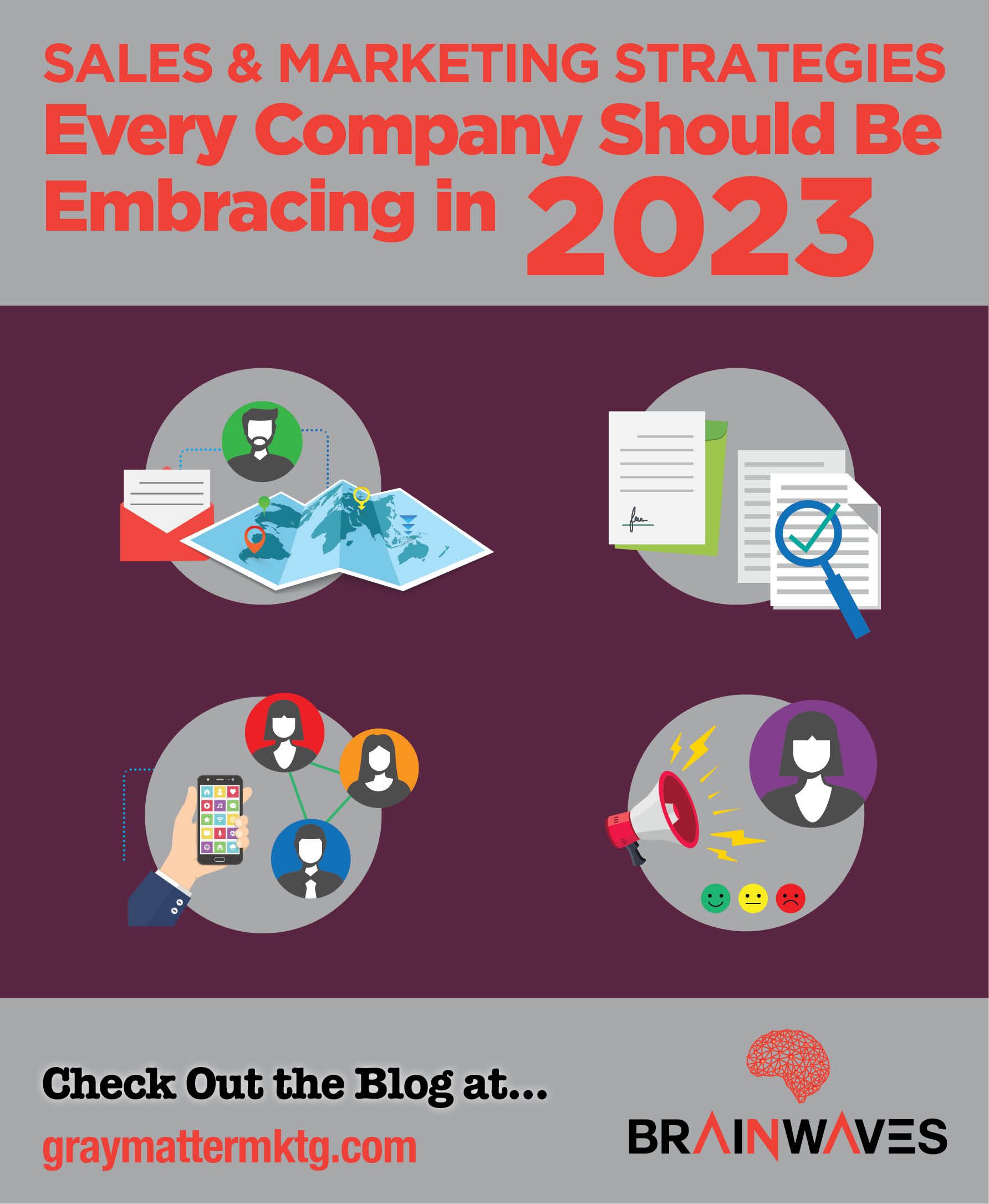How Can Thought Leadership Impact Your Brand?
Holding a Thought Leadership role—conveying ideas that places a person or a brand as an authority in a particular area—can be a content marketing tool that provides genuine value to readers without sounding self-promotional.
Thought leadership content can offer a new way of thinking about a subject, offer a solution to existing challenges, or answer questions that customers have about a general topic. When done consistently and in an objective manner (don’t mention your company or product names), the materials can directly impact a company’s bottom line, especially in fields where customers are keen to work with business leaders who are experts in their field.
Businesses in the B2B space should consider including thought leadership content in their overall marketing strategy. It can take the form of blog posts, white papers, research publications, podcasts, or webinars. Publishing content does not need to be too expensive and will have more longevity compared to most forms of paid marketing. As such, there is a real return on the time investment.
To understand the ROI, let’s consider how thought leadership can impact the bottom line:
Increasing Visibility
When you publish content, it can increase your brand visibility even when the content isn’t promotional. If the content offers real value to the audience, they will be curious to find out what the business does, increasing the chances of getting new leads. The content can be produced in different formats and shared across multiple channels.
It’s hard to predict the impact of great content but key decision makers in companies read up on their industries and they are naturally drawn to work with people with expertise and keen insights. It can get business leaders speaking engagements and even the opportunity to sit on boards of other companies. All this increases brand visibility. In fact, sometimes businesses have been invited to submit bids to projects due to publishing thought leadership content.
Earning Trust
Publishing well-researched content consistently helps build a business’s credibility in the eyes of potential customers. When a leader explores and writes about recent developments in a field, it shows they are genuinely committed and well-informed about the trends, challenges, and solutions around them. Part of thought leadership content answers questions customers may have in a non-advertising fashion. By doing so, thought leadership content can influence behavior and earn trust that translates into revenue.
Thought leadership content is also a great way to continue interacting with existing customers. It’s a chance for business leaders to explain to customers how the company intends to keep up with industry challenges and developments and to serve customers better.
Shortening the Sales Cycles
Businesses can shorten the time it takes to close a sale by preempting and addressing customer pain points. If a new customer challenge has recently come up, a business can place itself strategically by addressing how to handle such concerns. By demonstrating expertise and sympathy for customers’ pain, the business will have an easier time convincing customers that their products will solve their problem.
For instance, when in search of a software development partner, it will take a much shorter time to decide to work with a vendor who has a demonstrable list of published case studies about projects (with similar challenges to yours) they have undertaken in the past.
Complementing Other Content Forms
Thought leadership content should be one of several content types a company is sharing on its channels. Most companies have social media pages where they post highlights and respond to queries and comments from customers. They may also share posts regarding their corporate social responsibility work. There will obviously be promotional content. Thought leadership content adds to that variety and, in fact, can make people follow the brand.
Charging a Premium for Expertise
When a business publishes high-quality content for long enough, they can then use that to grow revenue by charging a premium. This is normally the case in industries such as executive coaching and marketing. Businesses are able to charge higher fees than competitors because they have a record of delivering high quality.
A business that wants to attract better paying clients can do this over time by positioning themselves as a genuine authority in their field. They can publish on platforms such as LinkedIn, which might later be syndicated by big publications. Over time, they will use their experience and exposure to earn premium retainer fees from clients.
What are the Foundational Elements of a Thought Leadership Strategy?
How does an organization get started with thought leadership content?
Understanding the Audience
Thought leadership must be guided by a deep understanding of the audience, which informs the unique point of view from which to develop the content.
The business must know the preferences, attitudes, and behaviors of their target audience. You must consider the places where the audience access content and the kind of searches they make. It’s also important to consider the format in which they want to consume information. For instance, some people enjoy delving into detailed white papers and research publications, while others prefer the findings broken down into a blog post they can read during a morning commute.
You should also consider the other content your audience is already consuming in your area of expertise. Here, you can either offer something of better quality or a unique perspective in order to stand out. If your audience is open minded, you can choose controversial topics and provide an opposing viewpoint.
Picking Your Channels
You should pick the channels where your target audiences search for information. However, you shouldn’t have too many channels and you're unable to effectively engage audiences. Being able to respond to comments, questions, and content suggestions is key to community building. A sense of community makes the audience become ambassadors of your content.
Staying the Course
It’s not realistic to expect to see the fruits of a thought leadership strategy within weeks. It takes months of posting regular content to be known as an authority in a field. Your performance metrics, therefore, should take this into consideration. If, after a few months, you still do not get any traction, you can begin to question the strategy.
Using Social Media for Visibility
Don't shy away from sharing your content repeatedly on multiple channels. Social media can be powerful for sharing video content, so organizations should repurpose written content into video format through livestream or recorded events. Live streams get more interaction and impact.
If your organization or executive leaders are thinking about venturing into thought leadership content as a marketing tool, they should follow through with it. With proper execution, it is a powerful tool to build credibility and B2B leads. The first step should be to figure out the audience’s pain points and preferred content format and then pick channels and produce content consistently. With time, you will get traction and notice the impact on your revenue.
Reach out to Gray Matter Marketing for assistance in developing the right content strategy to market your business.










